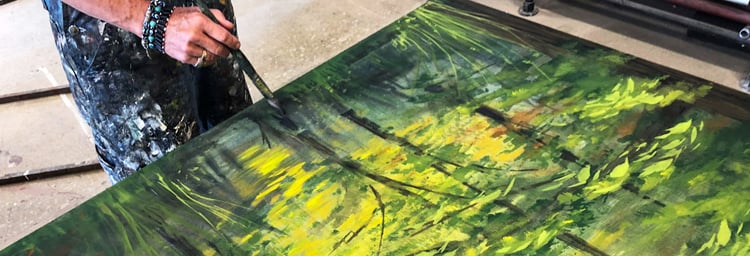I worked with Wendy Waszut-Barrett, President of Historic Stage Services, LLC, to teach a two-day scene painting class at CITT/ICTS RENDEZ-VOUS 2018. We merged historical scene painting techniques with modern materials. The class was not about replicating any particular composition, but exploring various painting techniques, as each student created unique composition. For the project, we focused on artistic process, coloration, contrast and brush stroke.
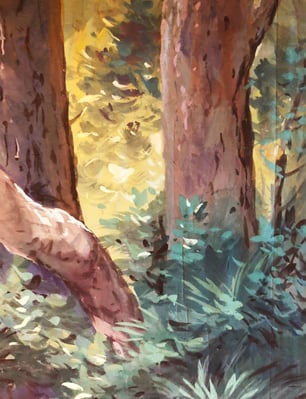
Detail of painting from Scottish Rite scenery collection in Hamilton, Ontario
The Project
We began the class by going back in time to understand historic working conditions and materials in scenic studios. Painting techniques used by late-nineteenth- and early-twentieth-century scenic artists were based on speed. A quick turnaround increased the overall profit margin for the studio, as the paint frame needed to be immediately available for another incoming project. Historical scene painting techniques are extremely efficient, saving time during the painting process and allowing for massive drops to be painted in a compressed timeframe of a day or two.
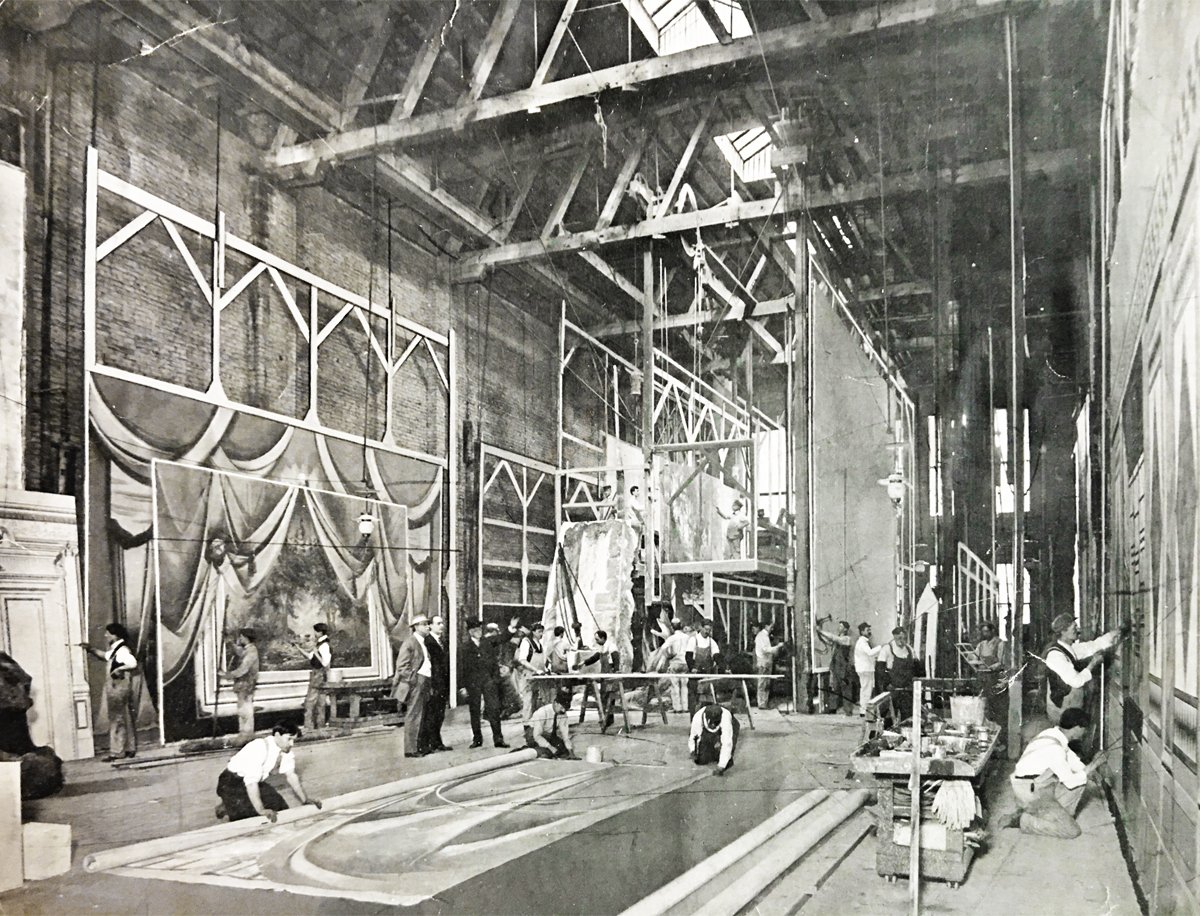 Sosman & Landis Studio, ca. 1910
Sosman & Landis Studio, ca. 1910
Turn-of-the-twentieth-century scenic artists both designed and painted settings for the stage. Conscious of the need for speed and viewing from a distance influenced how paint was applied to the canvas throughout the scenic art process. There was the need for contrast throughout the scene that allowed a backdrop to appear realistic from twenty feet away. A similar stage aesthetic appeared in a variety of performance venues that ranged from grand circus spectacles and operas to vaudeville and midway attractions. Whether the paint was applied in a series of glazes, or as opaque colors, the scenic illusion remained constant across the country at that time.
The class focused on foliage painting techniques that could be used for backdrops, murals, and fine art. Over the course of two days, we examined the historical approach analyzing compositions from old backdrops, and focusing on color, contrast, and brush stroke. We also presented contemporary tools and application tips.
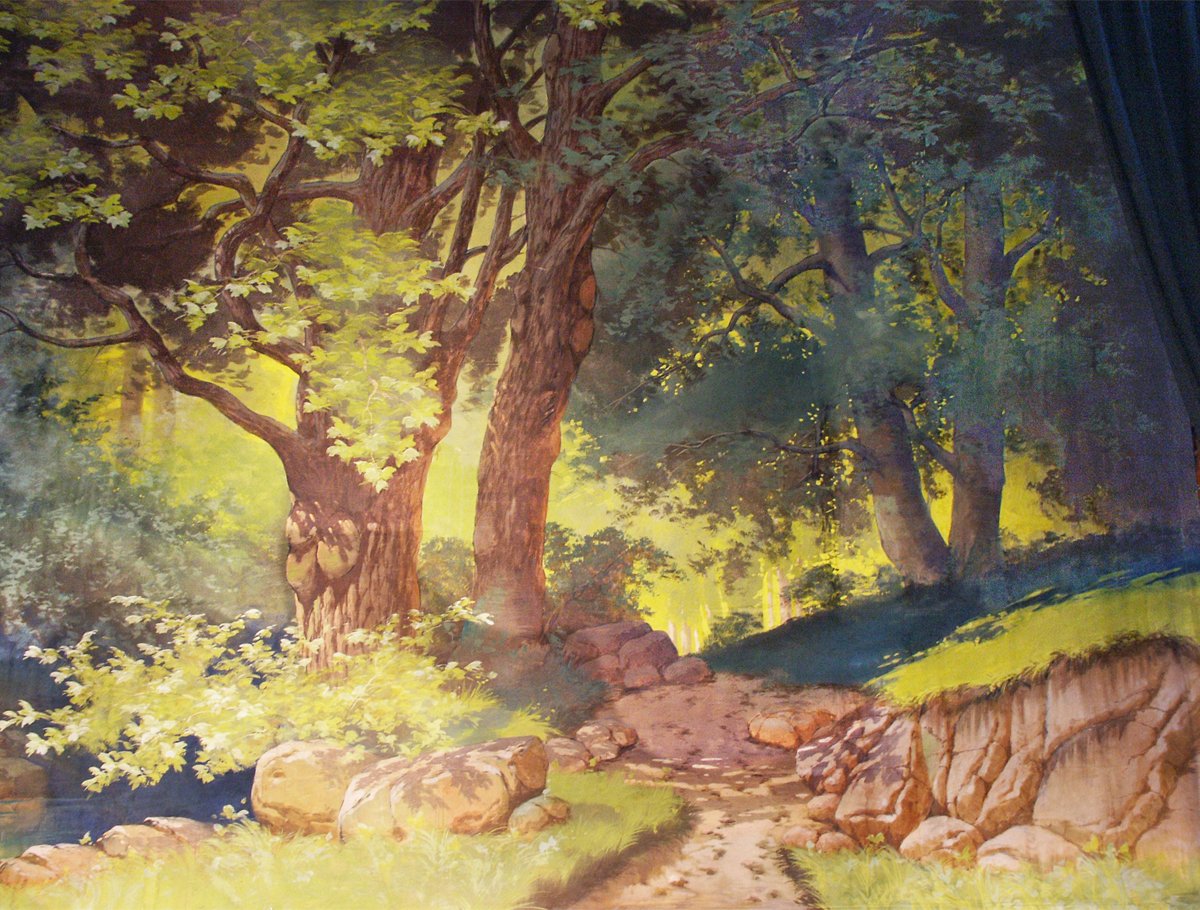 Detail of a wood drop painted by the Twin City Scenic Company in 1907, restored by Wendy Waszut-Barrett in 2002
Detail of a wood drop painted by the Twin City Scenic Company in 1907, restored by Wendy Waszut-Barrett in 2002
Step by step, we quickly created a woodland scene with light streaming from a distant source. Students focused on color, contrast and application, not replicating an exact composition. This eliminated the stress that many students feel when trying to produce an exact replica. This process also allows each student to explore specific techniques unique to their individual focus.
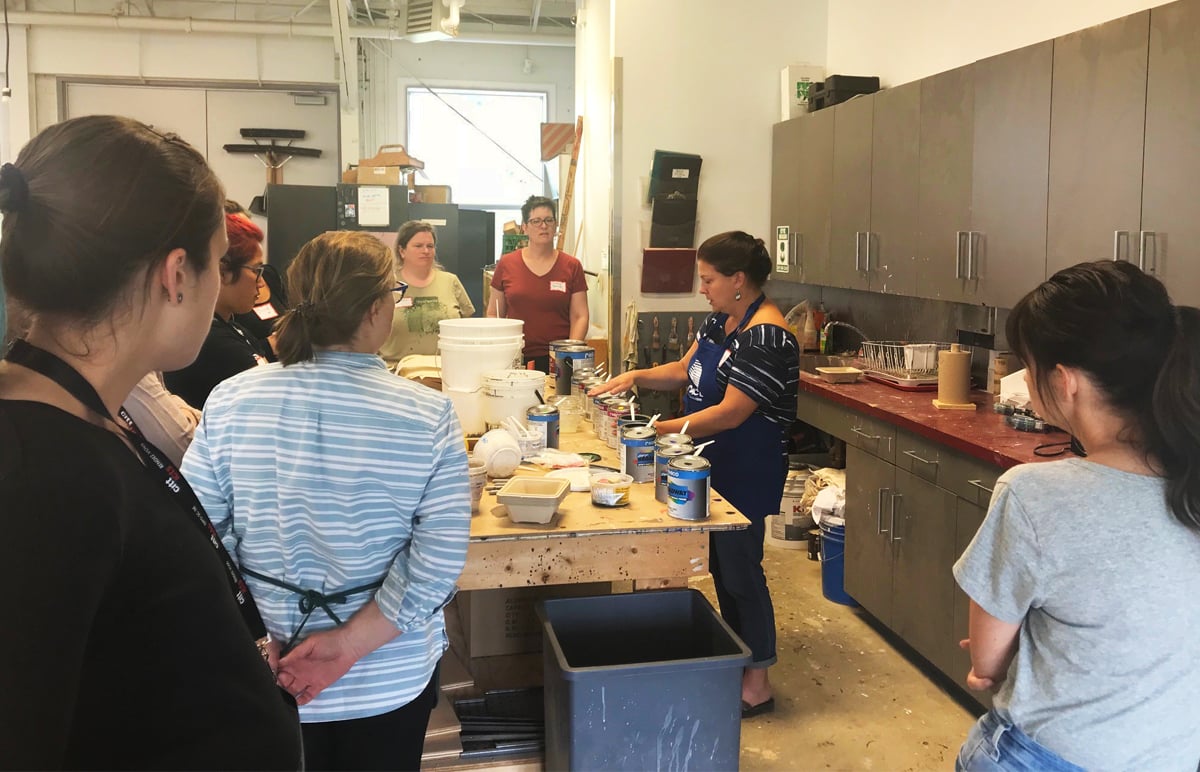 Wendy Waszut-Barrett discussing choice of colors for the foliage painting project
Wendy Waszut-Barrett discussing choice of colors for the foliage painting project
The class worked with Rosco Scenic Paint straight from the can. Placing them directly on the palette, colors were mixed and diluted prior to application. This is the same approach that early-twentieth century scenic artists used when handling dry pigment and diluted hide glue, or “size.” The motto for our class at every step was, “You simply can't screw this up, so have fun!” We circled the room, offering support and guidance for each project. The excitement and understanding of the techniques created an electric atmosphere in the studio as passersby stopped in to see our work.
4’ x 8’ soft covered flats were primed with diluted Rosco FlexBond prior to the beginning of the class. Our first step was to select four colors for the background – a dark green, a blue, a bright yellow, and a rich warm color, such as orange, burnt sienna, red, or the like. Students then created a woodland scene atmosphere using minimal concentrated colors by applying paint – either as a glaze, opaque layer, or combination of the two. Wendy did a quick sample on her flat and then directed the students to do their own version without replicating my painting color for color and stroke for stroke. That was our process; they would watch Wendy and then try something similar on their project. After the atmosphere was completed the next step was working up the foliage masses, whether it was a bush or tree branch. The third step was placing the tree trunks and branches while continuing to develop the foliage. Finally, we added highlights and lowlights to suggest a light source.
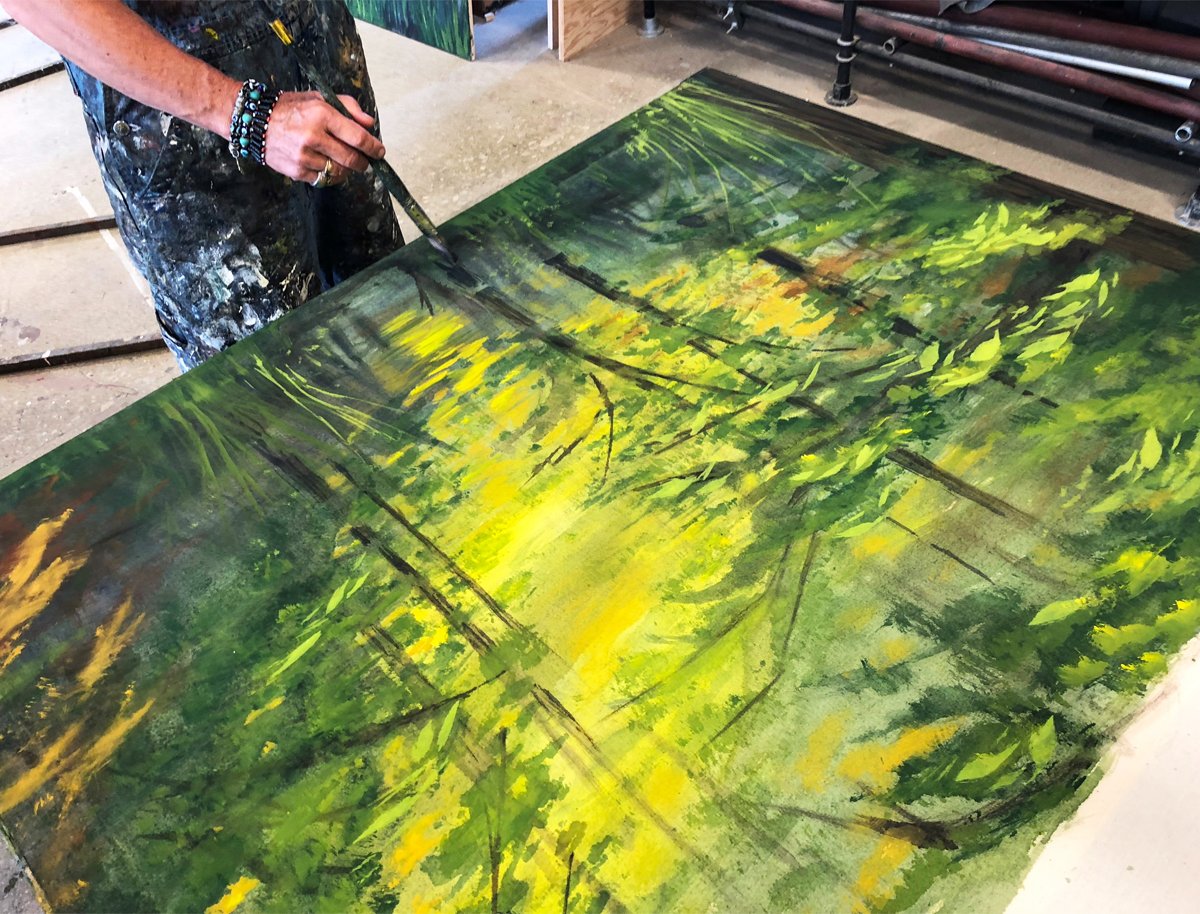 Working on one of the CITT foliage projects
Working on one of the CITT foliage projects
There is something delightful about watching students gain confidence and step outside of their comfort zone. There were many students in the class who expressed their delight. Gwenyth Stark, Scenic Charge for the Shaw Festival, said, “I have never tried anything like this before, and am learning so much here!” The class also included beginning scenic artists, professional costume designers and retired instructors. This diversity enriched everyone’s experience and enabled many different individuals to speak the same language.
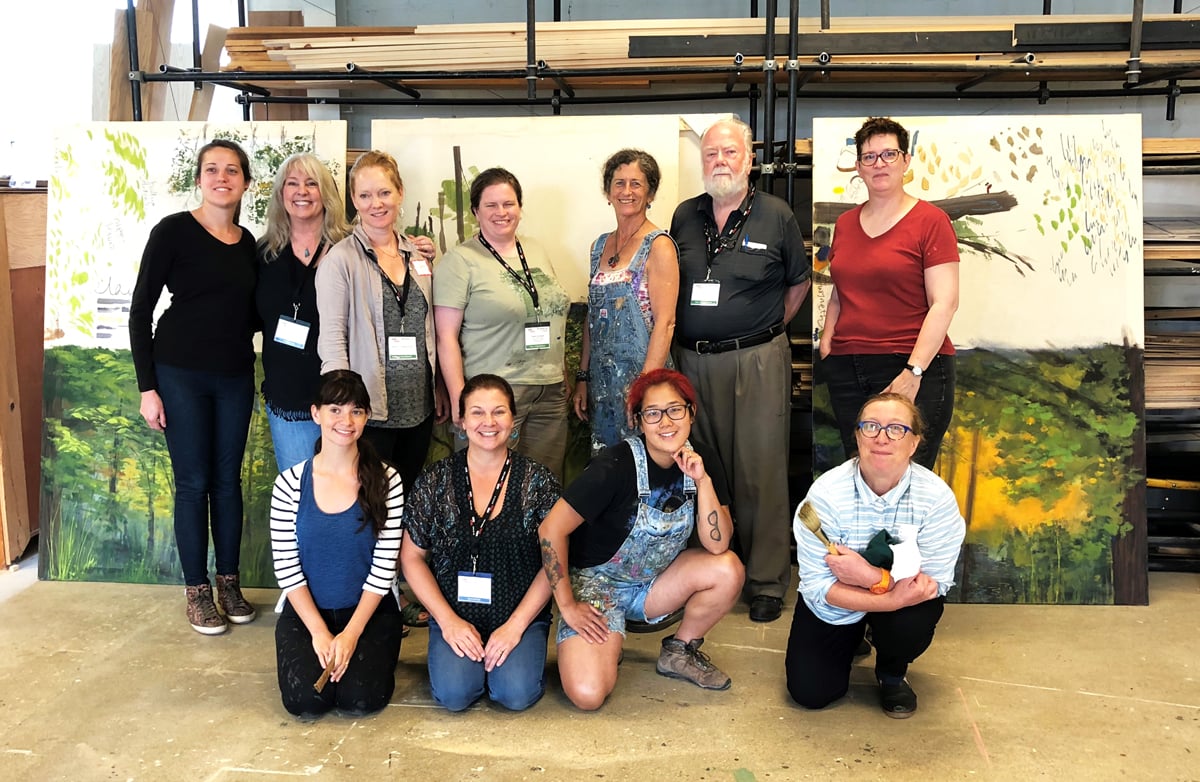 The 2018 CITT Paint Class, led by Jenny Knott and Wendy Waszut-Barrett
The 2018 CITT Paint Class, led by Jenny Knott and Wendy Waszut-Barrett
The best part about historical foliage painting is that it is simply a way to see and approach artwork for any theatre artist. Whether a backdrop, costume rendering, prop or scenic design - color, contrast and light always tell the story.
The Author
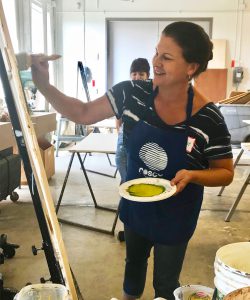
Wendy Waszut-Barrett is the President of Historic Stage Services, LLC, a company specializing in the evaluation, restoration, replication, and appraisal of historical scenery and stage machinery. She has worked as a scenic artist, designer, and historical consultant, specializing in painted scenery for historic venues. Recent publications include “The Santa Fe Scottish Rite Temple: Freemasonry, Architecture and Theatre”, and she also writes a daily blog about historic scenic art at: www.drypigment.net.
This fall, Historic Stage Services, LLC is offering a variety of Scenic Art Training Retreats at their studio in Cambridge, Minnesota. For more information, contact Wendy at waszut_barrett@me.com.

